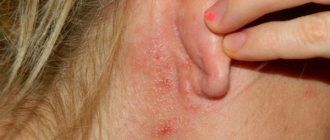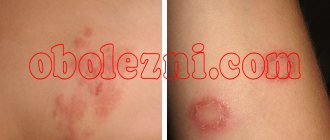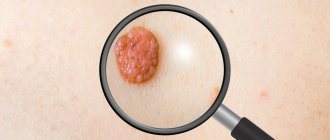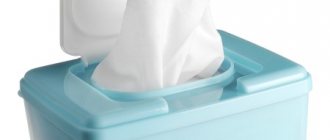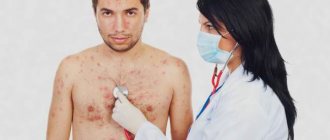The relevance of herpetic infections among the child population is increasing due to the increase in the number of frequently ill children with manifestations of immunodeficiency, which is the main provoking factor for the occurrence of diseases associated with herpes viruses.
Shingles in children is an exacerbation of a herpes infection initiated by the herpes virus type 3, which occurs as a result of chickenpox in utero or in early childhood. The disease is rarely reported among children, but can lead to severe neurological complications.
Reasons for virus activation
photo shingles in pregnant women
Herpes virus type 3 or Varicella-Zoster is involved in the development of two diseases: chicken pox and shingles. A childhood infection - chickenpox - causes a possible recurrence of the infection in the form of herpes zoster in the future.
In the vast majority of cases, this disease is registered among weakened and elderly people. Shingles is not often diagnosed in children, but is an indicator of a weakened immune system.
The susceptibility of a child’s body to the varicella zoster virus is very high in the age period from 3 to 7 years; almost all children experience the infection in childhood in a manifest or asymptomatic form.
Herpes Zoster is considered the only virus that can be transmitted by airborne droplets. Chickenpox is a widespread childhood infection and its contagiousness is also high. A special feature of the disease is its severe form when infected in adults, characterized by complications.
After chickenpox, the herpes virus remains in an inactive state for life, living in unequal trunks and dorsal roots of the spinal cord. This is why herpes on a child’s body, when it recurs, appears in the chest, neck or lower back. The limbs are involved in the infectious process less frequently.
A relevant and popular question is whether shingles is contagious for children around the sick person. Herpes zoster is contagious and is dangerous for adults and children who have not had chickenpox. The vesicles contain a large number of herpes zoster viruses. Therefore, infection occurs through contact and household contact.
Options for the development of the disease:
- Herpes zoster in children under one year of age is the result of chickenpox in utero. When a pregnant woman is infected with chickenpox in the second half of pregnancy, the fetus suffers the classic form of infection and often develops herpes zoster for a year after birth.
- Relapse in older children due to decreased immunity and weakening of the body.
Herpes zoster in an infant is of particular interest to specialists. With intrauterine infection of the fetus, the outcome may be different. If the mother had a protective titer of antibodies against chickenpox in her blood (in the case of previous chickenpox) and a relapse occurred, the baby may be born with an erased clinical picture of the congenital infection.
Minor neurological disorders may not be assessed in time. Cases of herpes zoster in children under one year of age should be considered as a result of chickenpox in utero .
Children are subject to careful examination to identify developmental defects and compliance with psychomotor development. Rehabilitation takes a long period of time.
Is shingles contagious to children?
The question of whether shingles is contagious or not for children worries all parents, and the answer to it is ambiguous. First of all, the danger of herpes zoster is determined by the immunological status: whether the child has or has not had chickenpox.
infection of the fetus during pregnancy
Post-existing chickenpox ensures the circulation of a protective titer of antibodies, so a person with herpes zoster does not pose a danger to the child.
At the same time, a child with clinical herpes zoster poses a danger to those who have not had chickenpox.
When identifying a list of contacts, special attention is paid to pregnant women, newborn children, and infants under one year of age.
If the pregnant woman has not had chickenpox, then those with herpes zoster should be isolated (hospitalized).
Newborns and children under one year old have a titer of antibodies against the virus, transmitted from the mother during pregnancy, however, their presence and the strength of immunity are not known for certain. Therefore, a patient with herpes zoster should be isolated.
Symptoms of the disease in a child
photo of herpes zoster in children
The incubation period of herpes zoster lasts for years and decades, and not all people get herpes zoster after chickenpox. If a child or previously uninfected adult becomes infected with herpes zoster from a patient, the first symptoms of chickenpox will appear within no more than 21 days. Most often, incubation lasts several days.
What does herpes zoster look like in children and what are the first signs of the disease?
Young children often cannot clearly articulate their feelings at the onset of illness. Discomfort in a certain area of the body, tingling, pain when touching and rubbing clothes or underwear may be ignored or not properly assessed.
The first symptoms and treatment in children with antiviral drugs, started as early as possible, significantly reduce the risks of severe disease and complications.
The process involves the skin of the chest, abdomen, back and lower back, neck and head. Extremities are extremely rarely affected by a herpetic rash.
The main symptoms of infection in children:
- Pain in a specific area of the body. The localization of pain is completely determined by the affected nerve. Most often, pain occurs in the area of the lateral chest, back, neck, and head. The pain increases and becomes paroxysmal, throbbing, unbearable. Small children become lethargic, whiny, and refuse to eat.
- The rash appears 3-4 days after the onset of pain. On the swollen, reddened base, bubbles quickly appear with transparent contents, which quickly become cloudy and turn into a crust. Rashes in children are often complicated by a bacterial infection, producing a yellow, brown, or greenish crust. Often the rash becomes covered with a blood crust in the hemorrhagic form of the disease. Herpes rashes on the body in children appear only in the area of a certain dermatome - an area of the skin that is innervated by the nerve affected by herpes zoster. The rash with herpes zoster in children is asymmetrical, linear, and does not cross different anatomical areas.
- The temperature with herpes in children can be either low-grade or febrile. In young children, the temperature rises to 38-39°C; in older children, with a mild course of the disease, it does not exceed 37.5°C.
- Regional lymph nodes enlarge.
Children's herpes on the body often occurs in an uncomplicated form, which cannot be said about the ocular, ear, and brain varieties.
How long will it take for childhood herpes to go away and what is the full recovery time?
Rashes with mild shingles completely disappear within 2.5-3 weeks, leaving areas of hyper or depigmentation in their place. Moderate or severe infection is characterized by longer recovery times.
The rash goes away in a month and a half, the pain persists for several weeks. In complicated cases, recovery time is delayed and is determined by the nature of the consequences.
Depending on how long it takes for the child’s shingles to go away, he or she is allowed into the team. The main criterion is the falling off of crusts. Up to this point, the patient poses an infectious danger to surrounding people who have not had chickenpox. Particular caution should be exercised when surrounded by pregnant women with unknown chickenpox status.
Consequences and complicated course
photo herpes zoster in children
With severe immunodeficiency, complicated forms of herpes zoster are described, which can lead to adverse consequences.
More rare forms of shingles among children:
- Ear (Ramsay-Hunt syndrome). This type of infection is caused by damage to the facial nerve. It is described by intense pain in the ear, rash in the mouth, loss of taste, decreased and loss of hearing, and paralysis of the facial muscles on the affected side.
- The ocular variety occurs in the form of conjunctivitis, keratitis and eyelid lesions. The process can move from one eye to another.
- Meningoencephalitis develops when the virus penetrates the meninges and brain matter. Lethargy or agitation, stupor, hallucinations, loss of consciousness, vomiting, paralysis and paresis occur. This form often leads to disability or death.
- The bullous cutaneous form is described by the formation of large confluent blisters that are prone to suppuration. Healing occurs with the formation of scars.
Important!
Herpes zoster in children is dangerous due to its numerous complications from the nervous system and the organ of vision.
Shingles in a child can be complicated by postherpetic neuralgia - chronic pain in the area of the rash. Most often in such cases, the area of the back, chest and neck is affected. Such consequences are recorded with a frequency of 10-18%.
An equally serious complication is damage to the eye organ when the rash is localized in the face and head, when viruses persist in the tissue of the trigeminal and facial nerves. In 10-25% of cases, keratitis and iridocyclitis develop, which can lead to loss of vision.
Diagnostics
photo herpes in children
To confirm the diagnosis, PCR and ELISA diagnostics are used. Smears of rashes are examined for the presence of viral DNA using PCR. Blood tests for antibodies to the Varicella-Zoster virus show an increase in the titer of IgG antibodies, and soon IgM also become positive.
Differential diagnosis is carried out with the following diseases in children:
- True eczema. Diagnostic errors regarding this skin disease are common. Eczema is characterized by frequent allergic reactions and hereditary predisposition. Externally, the rash is similar in its morphological characteristics; crusts also form. The temperature remains normal, itching is pronounced, there is no intoxication and pain syndrome - these signs mainly distinguish herpes zoster in children from eczema. An equally important difference is the localization of the rash in eczema in children: the limbs and folds are more often affected, the rashes are symmetrical and cross the midline of the body. So, herpes on a child’s leg should first of all be differentiated from eczema.
- Herpes simplex in disseminated form is characterized by frequent relapses, the localization of the rash in children is chaotic, and not along the nerves, bilateral damage to the body, and less severe pain. For example, herpes on a child’s hand is often the result of activation of the type 1 herpes virus.
- Pyoderma in children is also associated with immunodeficiency; the rash becomes crusty. But there are no blisters, pain or unilateral lesions.
- Allergic dermatitis is characterized by intense itching, a papular rash without blistering elements, absence of pain and symmetry of skin lesions in children.
Diagnosis of recurrent chickenpox in children is often difficult due to the atypical course of herpes zoster, which is not characterized by rashes. In such situations, signs of complications may come to the fore - encephalitis, serous meningitis, paresis or paralysis.
Expert recommendations
What care does a child infected with herpes need?
- Avoid taking a bath. In the active phase of the disease, there is no need to bathe the child; carry out only basic personal hygiene measures, no more.
- To avoid provoking the development of fungus, walk with your child in the dark, when the sun is not so active.
- Provide your baby with underwear and bedding made from natural fabrics. Ideally, cotton ones. In synthetics, the child's skin sweats a lot, which contributes to the spread of infection.
- Include more fresh fruits and vegetables in your baby's food.
- Explain to your child that wounds should not be scratched, otherwise the area of skin damage will increase. Infants need to be monitored constantly.
- Protect your sick baby from others to prevent the spread of infection.
Treatment
photo herpes in children
Treatment of herpes zoster in children is carried out in a hospital setting. The main and priority treatment for herpes zoster in children is antiviral. The earlier antiherpetic therapy is started, the more the risk of complications is minimized.
It also depends on how many days it will take for herpes to go away: recovery occurs faster when therapy is started simultaneously with the first signs, namely pain.
Treatment of herpes zoster in children is carried out with the following drugs:
- Acyclovir.
- Valtrex.
- Famvir.
- Valaciclovir.
- Interferon drugs and inducers.
Treatment most often begins with Acyclovir. Tablets are prescribed for children over 3 years of age with uncomplicated infection, and for children under 3 years of age - in the form of a suspension. If the disease is severe, intravenous infusions of Acyclovir are used.
In addition to antiviral drugs, older children are prescribed interferon inducers: Kagocel and Isoprinosine tablets. At the follow-up stage or simultaneously with antiherpetic therapy, interferons are used: Viferon, Genferon, human leukocyte interferon.
Local treatment is carried out as follows:
- The areas are treated with antiseptic solutions - hydrogen peroxide, miramistin, then dried with dyes - fucorcin, fuchsin, methylene blue.
- Treatment with antiviral ointments and gels - Zovirax, Viru-merz, Acyclovir.
- For eye damage, interferon drops, Ophthalmoferon, and antiviral ointments are used.
To suppress pain, inflammation and relieve intoxication, the following groups of drugs are used:
- intravenous infusions of saline, glucose;
- hormonal agents (Prednisolone, Hydrocortisone);
- non-steroidal anti-inflammatory drugs (Ibuprofen);
- analgesics (Promedol).
Shingles in children is a sign of immunodeficiency. An immunogram study, analysis of immunoglobulin content, and diagnosis of chronic infections are required. After which immunocorrection courses are prescribed.
Depending on the detected abnormalities, drugs and interferon inducers, interleukins and antiviral and antibacterial immunoglobulins are prescribed, and concomitant infectious diseases are treated.
There is no fundamental difference in how to treat herpes in a child on the leg or arm, caused not by herpes zoster, but by a simple type of pathogen. Treatment is also carried out with acyclovir drugs. Only with a mild infection can interferon drugs be prescribed.
ethnoscience
Most people suffer from this disease, so do not despair. Shingles can be cured using traditional medicine.
Folk remedies are a great help in the fight against shingles. Wormwood will help destroy the virus. It is recommended to use it in the form of a tincture.
It is necessary to moisten a piece of napkin or gauze, make a compress and apply for 20 minutes several times a day to sore spots. After this, it is recommended to rub castor oil into the skin.
If an edematous rash occurs, treatment should be performed using a soda-salt mixture. In the amount of 1 tbsp. spoons of soda and salt should be mixed until the consistency of sour cream and lubricated on sore spots 3 times a day.
Garlic tincture with castor oil has proven itself well. To prepare it, you need to pour 100 g of chopped garlic into a glass of castor oil and heat it in the oven for 3 hours at 50-70ᵒ. Then cool and strain. Apply as an ointment several times daily to areas affected by shingles.
It is good to lubricate the rash areas with tar or garlic juice in the morning. An ointment made from willow leaves will help effectively combat shingles. To prepare it, you need to burn the dry leaves, mix the ashes with 9% vinegar to the consistency of sour cream. Apply to sore areas 3 times a day.
Burdock tea will help get rid of the virus that causes shingles. 1 teaspoon of common burdock is poured into 100 g of boiling water, infused for an hour and drunk ¼ cup 4 times a day.
Additionally, when treating shingles, salt iodized and starch baths are recommended. They should be taken alternating every other day.
Gerpevir ointment has received good reviews, which is recommended for lubricating damaged skin. Inflamed blisters must be constantly smeared with a 5% solution of hydrogen peroxide, and flaky crusts must be smeared with erythromycin ointment.
If your skin feels painful, you can apply ice to it for a few minutes. In case of illness, additional intake of vitamin C, zinc and other multivitamins will improve the condition of the immune system.
In severe form, against the background of elevated temperature, herpetic infection and deterioration in general health, the disease spreads to other systems and organs.
Source: herpesmed.ru
Prevention
photo shingles in children
If a child has been in contact with a patient with shingles, you should consult a doctor to decide on passive immunization: administration of antiherpetic immunoglobulin.
The drug is a ready-made antiviral antibody. As a rule, immunization is carried out for children with immunodeficiency and weakened children, after suffering an infection of any nature.
Immunoglobulin does not exclude the occurrence of the disease, but it completely eliminates the risk of a severe course. Antibodies are administered in the first 72 hours after contact with a patient with herpes zoster.
Herpes zoster in young children can be prevented through vaccination. Given the considerable risk of complications after a recurrence of chickenpox, experts recommend vaccinating children.
The Varilrix vaccine is administered once at the age of 9 months to 13 years and twice with an interval of 1-2 months for adolescents. Immunity lasts for at least 10 years. The vaccination is also relevant for women planning pregnancy, in the absence of IgG antibodies to the varicella zoster virus. Rare cases of a mild form of herpes zoster after vaccination have been described.
To strengthen the body in terms of antiherpetic protection, courses of B vitamins, omega acids, and antioxidants are used. Frequently ill children should not be exposed to hypothermia and sudden temperature changes, excessive physical and mental stress.
Spa treatment in countries with mild climates will be useful. During periods of well-being, children exposed to frequent infectious diseases should be vaccinated against Haemophilus influenzae and pneumococcal infections, in addition to the standard vaccination schedule. The fewer infections a child suffers, the less likely the herpes virus is to attack the child’s body.

